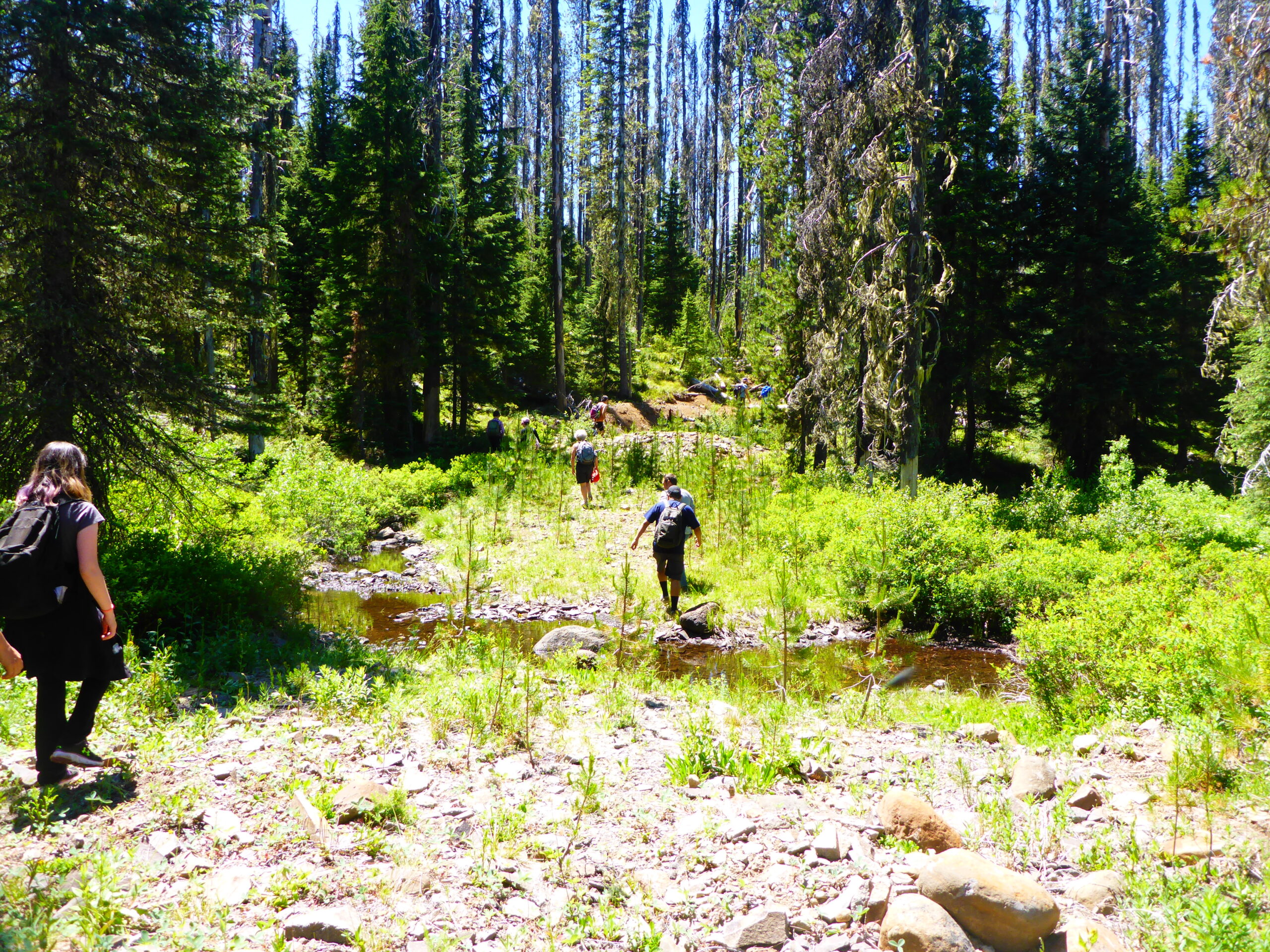Lemiti Butte Timber Sale

In response to concerns from Bark, Oregon Wild and several individuals, the Forest Service has dropped 869 acres from a proposed timber sale south of Mt. Hood. The proposed Lemiti Butte Timber Sale consists of 1,432 acres of salvage logging (down from approximately 2,300 acres proposed in 2012) in a mostly roadless area, in the Clackamas River Ranger District.
The project area borders the Sisi Butte Wilderness Area to the east, Olallie Lakes Scenic Area to the south, and the Confederated Tribe of Warm Springs Reservation to the west. The project contains a large area of standing dead lodgepole pines with a growing understory of young mountain hemlock. The lodgepole pines were killed by an outbreak of mountain pine beetles, a native insect. The Forest Service intends to clear-cut the lodgepole pines to reduce the risk of wildfire, improve public safety and to protect timber resources. Natural features of this area include Lemiti Creek, Slow Creek, native meadows containing several medicinal herbs, Lemiti Butte, diverse bird community, “frost pocket” created by surrounding topography, east winds in the summer and an ecosystem in transition!
This area is also historically significant, as it is the former location of the historic Oregon Skyline Trail, as well as the former site of the Lemiti guard station. The Lemiti Butte project would build 3.8 miles of new roads in an area that is almost entirely roadless, as well as rebuilding 3.5 miles of roads that have recovered through decommissioning. In Bark’s and others’ comments, concerns were raised about the loss of valuable snag (or standing dead tree) habitat for wildlife. Because of this concern, the proposed action was adjusted, and areas such as suitable owl habitat and riparian reserves would receive no treatment, retaining all of the snags there. Some large snags would be created by tree topping.
Lodgepole pine ecosystems naturally function with fire as a key ecological component, relying on fire to regenerate. Lodgepole pine grows fast and dies young and is often killed by beetle infestation, as is the case in Lemiti Butte, or from a stand replacing fire. The lodgepole pine dominant areas of Lemiti will either experience a stand replacing fire or the healthy and growing understory of mountain hemlock will grow into the dominant tree species, changing the ecosystem and greatly reducing the frequency of fire. We believe it is important to recognize and consider the ecological function that a forest fire would provide to this area.

Resources for Comment-Writing
Roads
The Lemiti Butte project would build 3.8 miles of new roads in an area that is almost entirely roadless, as well as rebuilding 3.5 miles of roads that have recovered through decommissioning.
The FS also proposes to close 1 mile of road 4220-125, a loop road that has been closed at one end but is open at the other end near this crossing. The proposed action would involve decommissioning a short section of the road by pulling out two side-by-side culverts at Lemiti Creek and installing a berm. The rest of the road would remain on the system as a closed road.
Habitats & Species
This project contains 59 acres of dispersal habitat for Northern spotted owl. There is also a Bald Eagle migratory corridor and Western bumblebee is known to be in the area.
Associated Files